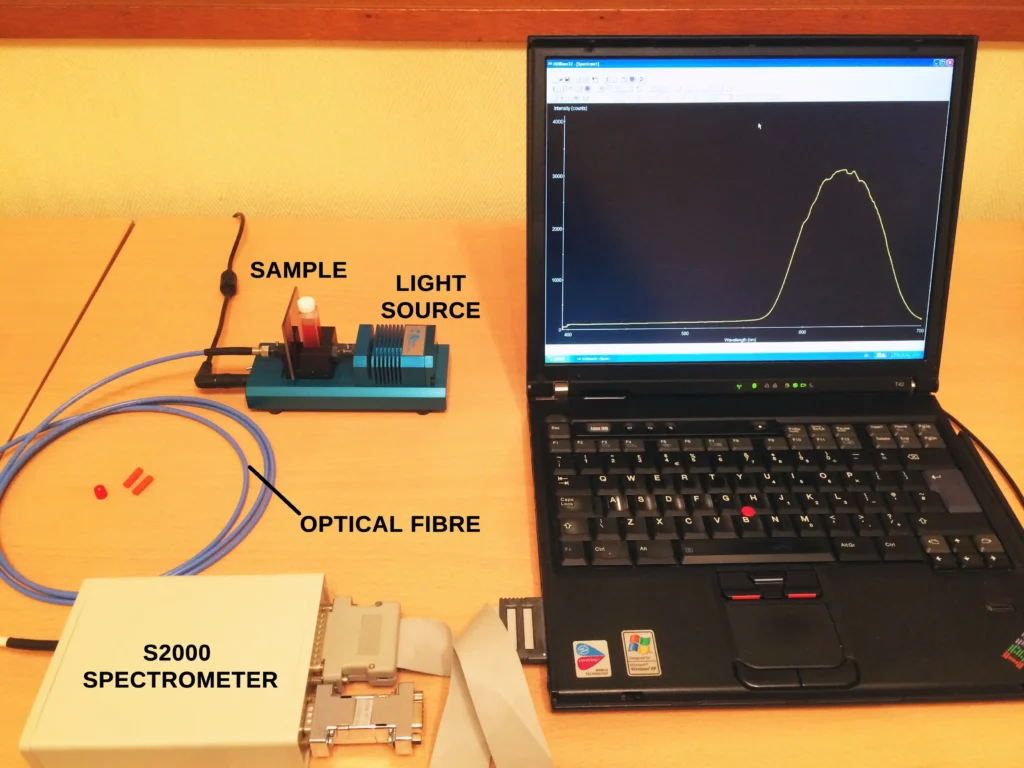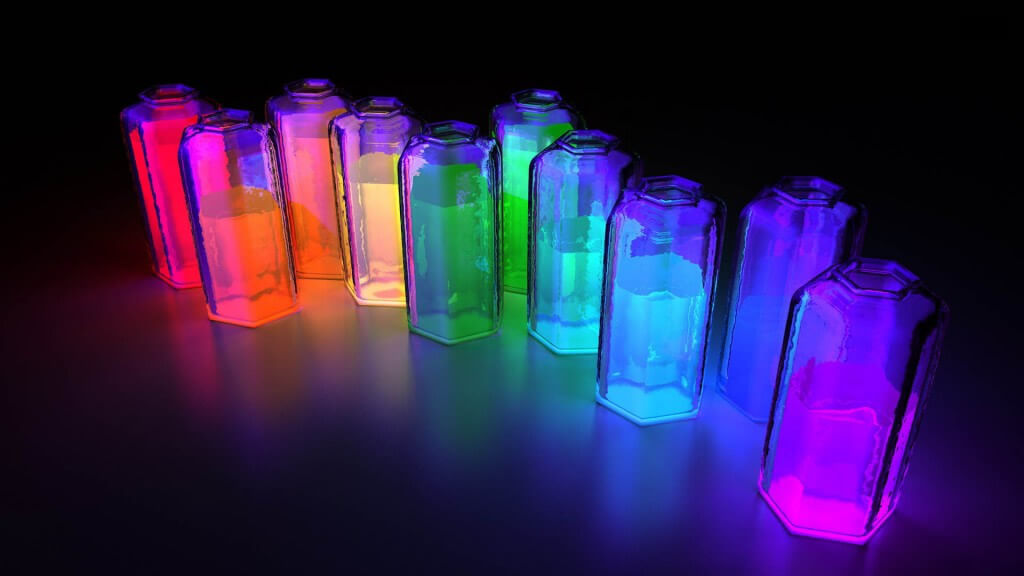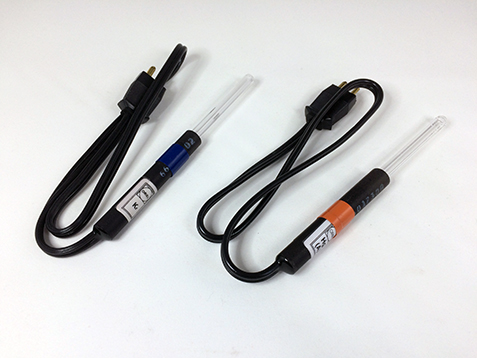
The calibration of spectra in wavelength λ that you will see in these different posts has usually been performed with commercial “pencil-type” spectral lamps of mercury-argon Hg(Ar), krypton (Kr) and neon (Ne). These lamps use a continuous AC or DC discharge to excite the inert gases in the tubes and emit a series of narrow atomic emission lines in the UV and visible. The wavelengths of the atomic transitions in these lamps are very precisely known. You can also calibrate a spectrometer effectively using small neon “power on” indicator lamps that you see on old electrical equipment panels. Unfortunately, these small lamps are now becoming replaced by LED’s. LED’s themselves are not useful for calibrating spectrometers since the emission from the diode is far too broad: several tens of nm. Examples of true spectral calibration lamps are shown in the top picture and here in Figure 1:
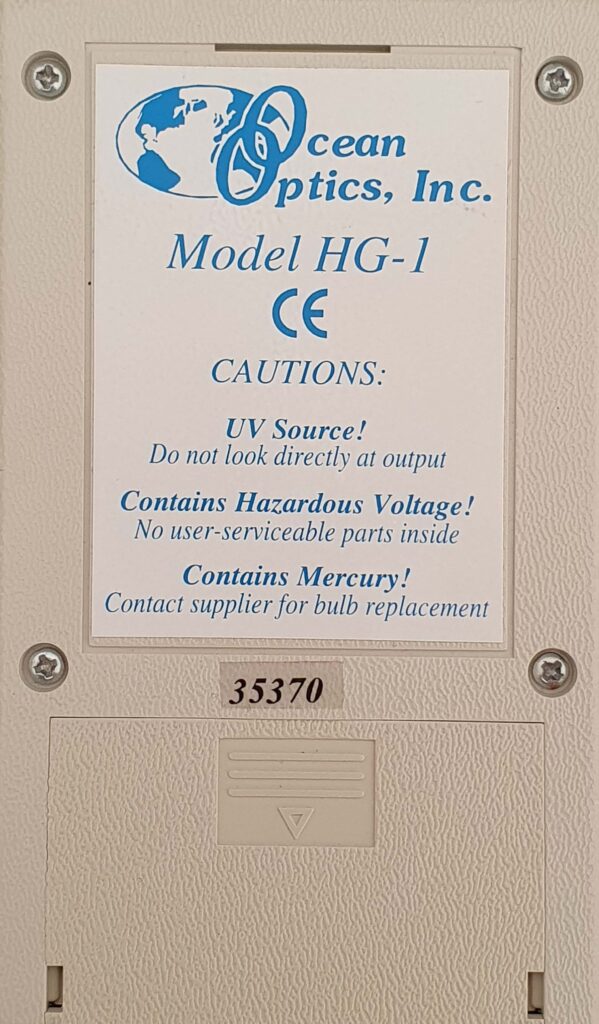
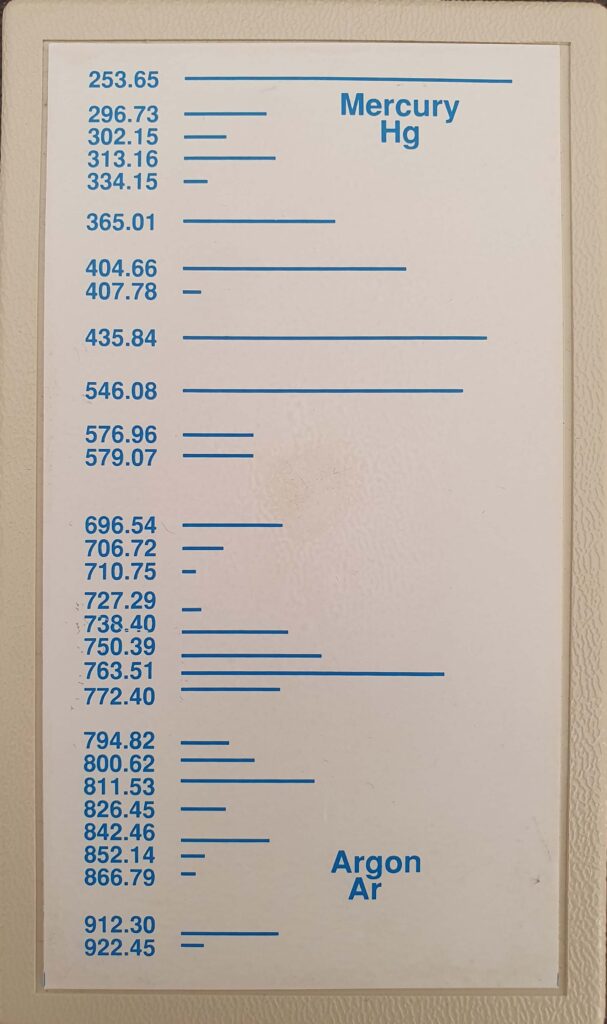
Fig. 1 depicts the HG-1 model from Ocean Optics company, who are now called Ocean Insight. This is a compact Hg(Ar) spectral lamp and is a very useful little light source for spectral calibration. A spectrum from this lamp consists of a mix of emission lines from mercury vapour and argon gas. The intensity and number of lines that are visible will vary slightly from lamp to lamp, but the typical spectral output is shown in Fig. 1B. The lamp can be powered either by a 9V battery or 12V DC and is relatively inexpensive compared to other light sources such as deuterium, helium and thorium lamps used by professionals. The lamp is insensitive to temperature changes, the average intensity is constant and reproducible over time and it has a long running life of several thousand hours. The output socket has an SMA-905 connector and optical fibres direct the light directly to the spectrometer or to the test sample.
The argon in this lamp is the “starter” gas. For the first few tens of seconds after start up, Ar lines are immediately present in the spectrum. After a couple of minutes once the lamp has warmed up, the Ar emission lines drop in intensity and the mercury lines start to dominate the discharge. After about 30 minutes the lamp output has fully stabilised and the Ar lines have all but disappeared. In another post I describe a time-resolved experiment that demonstrates these time-dependent line intensity changes which show some interesting effects.
A typical spectrum produced by a calibration lamp, in this example a krypton (Kr) discharge lamp, is shown in Figures 2 and 3.

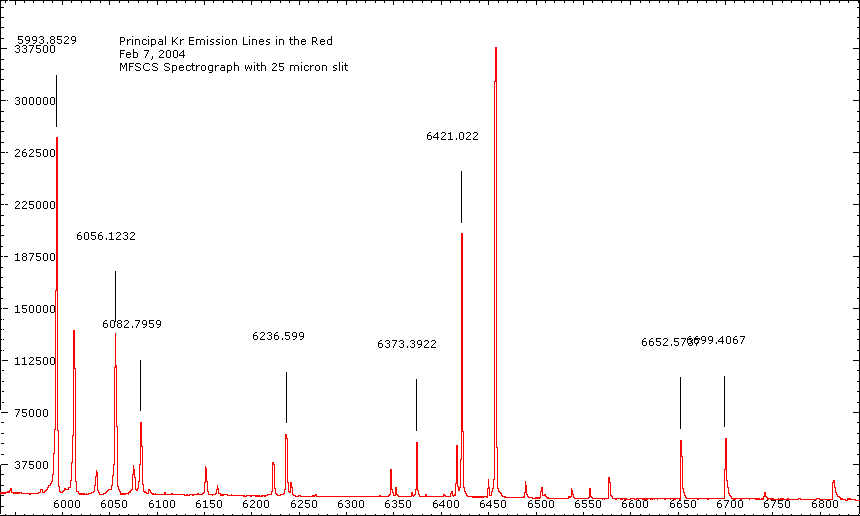
For those of you wanting to learn more about spectral lamps and the full range of wavelengths produced by several of these light sources, Oriel-Newport produced a very useful booklet some time ago with representative spectra from these lamps and the wavelengths values.
